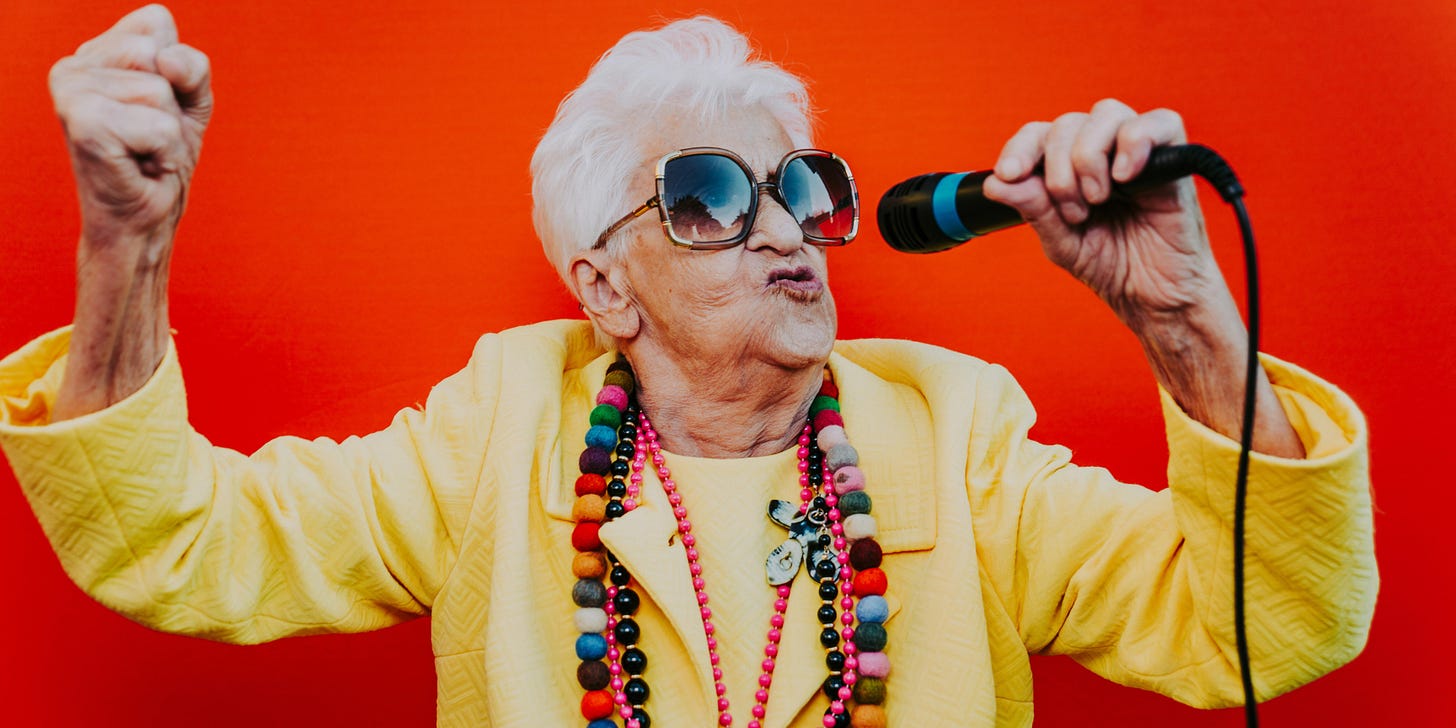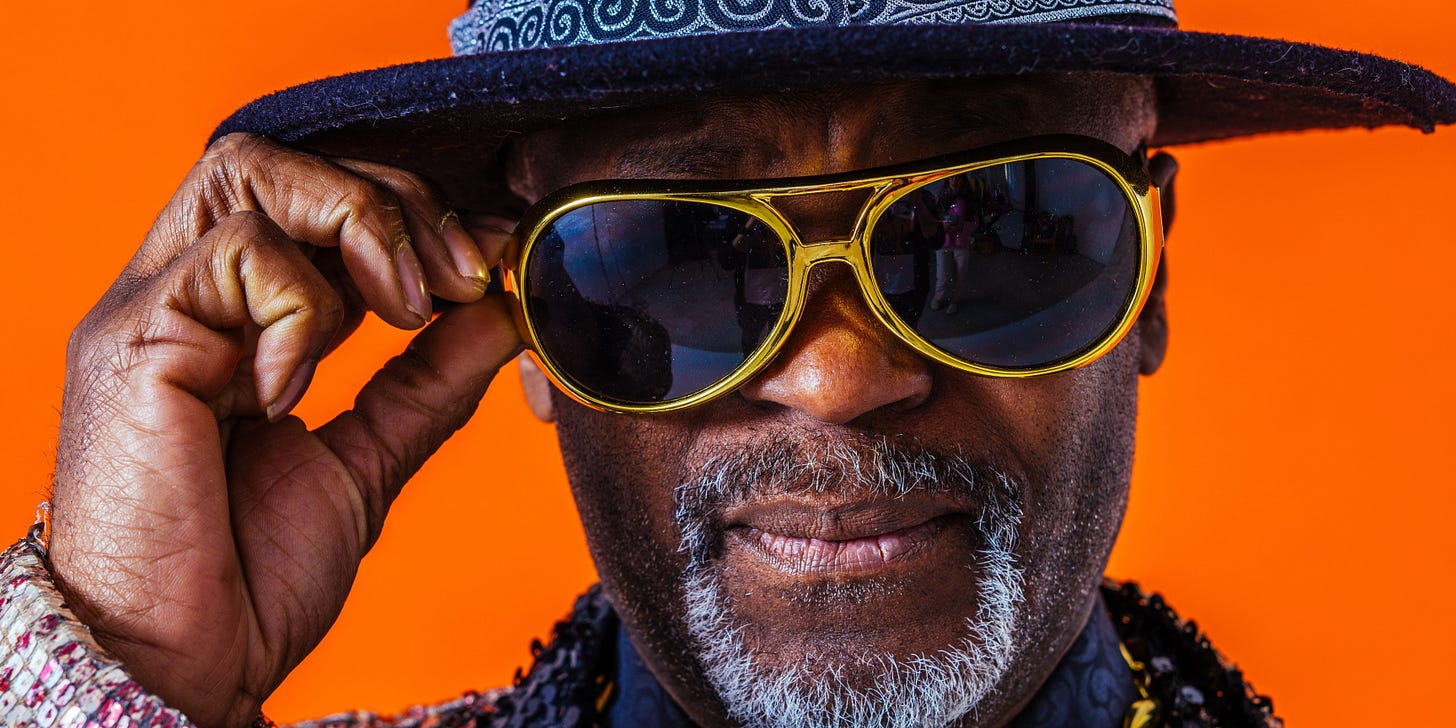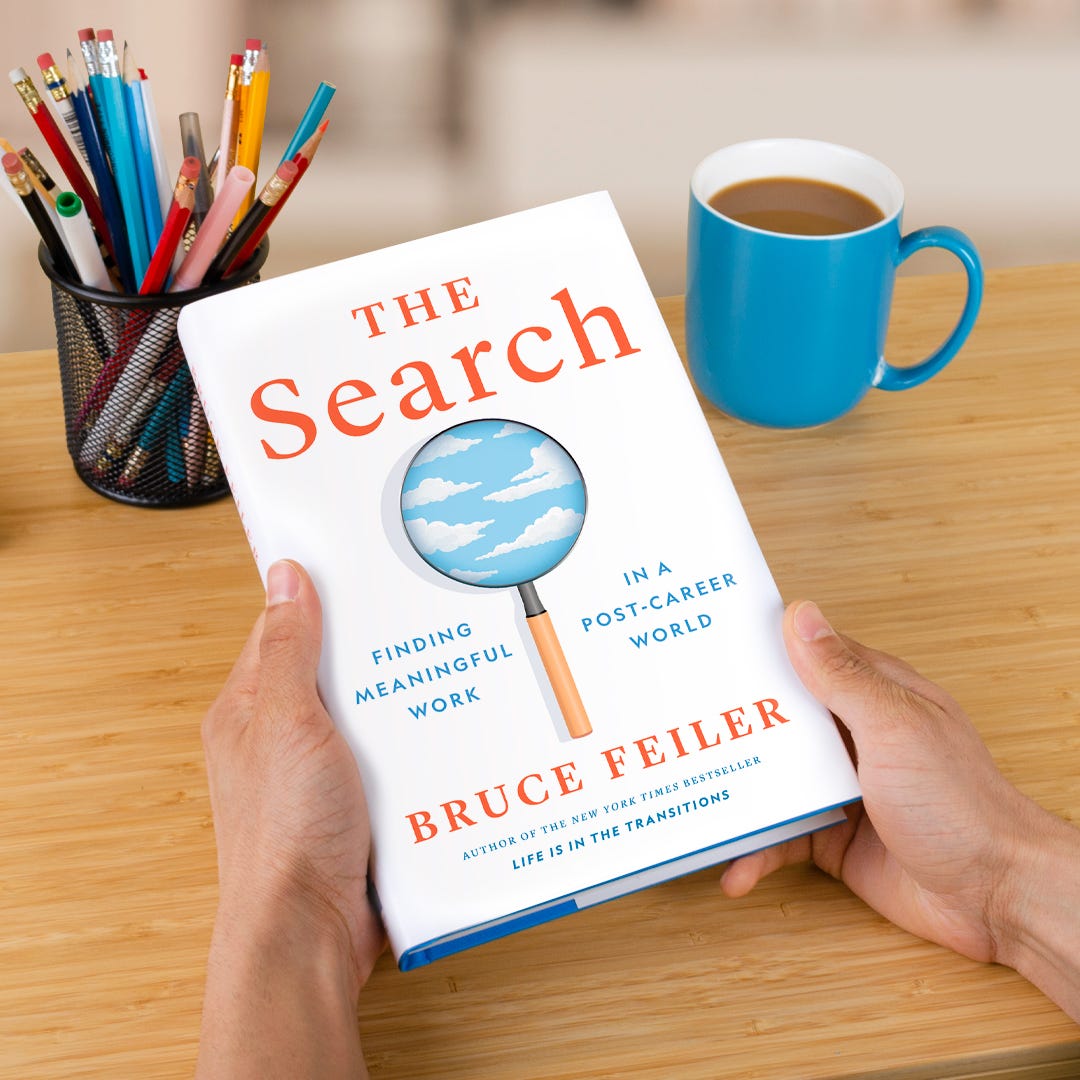Thanks for reading The Nonlinear Life, a reader-supported newsletter about navigating life's ups and downs. If you're new around here, learn about me, or check out our introductory post. And if you enjoyed this article, please subscribe or share with a friend.
___
The news is supposed to be about what’s new. After all, that’s why it’s called news! But these days the news seems to be all about what’s old.
First, there’s the inescapable talk about how old our political leaders are—or should be. The cover of this week’s issue of The New Yorker shows a walker race among our oldest pols. “Is the U.S.—long thought to be the land of new beginnings—in danger of becoming a sclerotic gerontocracy?” asks editor David Remnick. He writes of his conversation with the cartoonist Bill Blitt, who created the cover, “As a fellow old duffer (I’m nearly three years older than he is), I called him for a kvetch fest and was rewarded with talk of borrowed walkers, missing teeth, lost hair, and some new belly buttons.”
Second, pop culture writ large is cuddling up to the olds. Earlier this year, 81-year-old Martha Stewart steamed up the cover of Sports Illustrated’s swimsuit issue; and tonight The Golden Bachelor introduces its “silver fox,” where a “charming 72-year-old bachelor” will choose among a bevy of “aging beauties” who are “vying for Grandpa.”
And speaking of grannies, #GrannyTiktok is an unlikely hit on the Gen Z playground, making celebs out of octogenarians with screennames like AngryGrandma18 and Its_J-Dog. Grandma Droniak, the alias for 93-year-old Lillian Droniak, who regularly posts disses of her exes and sells t-shirts that say “You’re not invited to my funeral,” has 12 million followers and 350 million likes.
But by far the biggest source of encouraging news for the fogies is a wave of groundbreaking studies about the upsides of grandparenting. The Economist summed up the moment: “The age of the grandparent has arrived.”
Here’s how the article begins:
The most saccharine song of 1980 was “There’s No One Quite Like Grandma”, performed by the St Winifred’s School choir from Stockport, England. It shot to the top of the British charts as kids everywhere gave it to granny for Christmas. “Grandma, we love you,” they sang. “Grandma, we do. Though you may be far away, we think of you.”
Today, as the once-cherubic choristers start to become grandmas and grandpas themselves, grandparenting has changed dramatically. Two big demographic trends are making nana and gramps more important. First, people are living longer. Global life expectancy has risen from 51 to 72 since 1960. Second, families are shrinking. Over the same period, the number of babies a woman can expect to have in her lifetime has fallen by half, from 5 to 2.4. That means the ratio of living grandparents to children is steadily rising.
This trend may prove damaging to the global economy [see: Italy, Japan, and China, all of which are shrinking so fast they’re leaving smaller populations of young people to pay for the care of a swelling population of old people]. Still it’s great news for families, where grandparent involvement is increasingly being shown to have lots of upsides and virtually no downsides.
Based on this emerging science, here are three surprising ways that grandparents are a boon to contemporary life:
1. Grandparents Are Happier
The majority of people over 50 will become grandparents. Among the many reasons that statistic is encouraging is that grandparenting makes people happier. A 2020 study by Girogio Di Gessa of University College London, and colleagues, found that becoming a grandmother in particular increased the health, social engagement, and wellbeing of grandparents.
Compared to grandchildless mothers, those who became first-time grandmothers in roughly the previous year reported higher life satisfaction and lower depression, whereas those who transitioned earlier reported similar well-being.
These findings echo the Berlin Aging Study looking at 500 grandparents age 60 and older, which found over 20 years that those who help with childcare have mortality rates that are 37% lower.
2. Grandparents Are More Physically Active
The conventional view of grandparents is that they slow down – and force others in the family to be less active alongside them. But an inventive study out of the University of Glasgow shows the opposite to be true. Victoria Palmer, of the Institute of Health and Wellbeing, used data from five three-generation families from the West of Scotland to reveal that the physical activities of older people contribute to a family culture of physical activity, thus deepening ties.
Being active together “strengthens intergenerational relationships between children and grandparents through shared routines (after school care, for example) and interests (physical activity practices),” the study concludes. The grandparents’ relationships with their adult children also grew.
The halo effect of role modeling works in all directions in this case – more active grandparents inspire more active parents, which in turn inspire more active grandchildren.
3. Grandparents Are Keepers of Family History
As longtime readers of The Nonlinear Life know, I’ve written passionately over the years about the power of family narratives. Just over the last few weeks, I’ve received multiple emails from rabbis saying they quoted my piece, “The Stories That Bind Us,” in the high holiday sermons. [Thank you!]
Whenever I’m asked to speak about families, I love impressing on grandparents that one of their primary roles should be as caretakers of family history. Stop criticizing your children’s parenting (or worse, your children’s spouses’ parenting!) and instead relieve your exhausted offspring by taking your grandchildren for a visit to the ice cream store, the library, or, even better, the cemetery, and share stories of your own growing up.
Research confirms how much grandparents should relish this role. A survey of 2,654 grandparents from AARP showed that 53 percent said a priority of theirs was to share life lessons with their grandchildren. Their top three favorite topics to discuss with their grandchildren:
Morals and values
School, college/career plans
Food and nutrition
At the bottom of the list:
Politics
Drugs
Sex
As encouraging as these statistics are, I think the bigger meaning of the “age of the grandparent” is the rewriting of the rules of life course. In the Middle Ages, the prevailing view was that life was a staircase up to middle age, followed by a staircase down. In Modern America, the prevailing view was that life was a descent to middle age, followed by a staircase up.
Neither simplistic view is accurate. As my friend Marshall Duke, the (now retired) Emory professor who with his colleague Robyn Fivush did the original research on family narratives, shared with me, the ascending family narrative and the descending one are both wrong.
“The most healthful narrative,” he said, “is the third one. It’s called the oscillating family narrative: ‘Dear, let me tell you, we’ve had ups and downs in our family. We built a family business. Your grandfather was a pillar of the community. Your mother was on the board of the hospital. But we also had setbacks. You had an uncle who was once arrested. We had a house burn down. Your father lost a job. But no matter what happened, we always stuck together as a family.’”
Perhaps the most valuable lesson grandparents can share with both their stressed-out children and their impressionable grandchildren is that life comes with ups and down; all transitions have challenges; and even if you’re struggling with an especially hard phase of the oscillation, the chances that this difficulty defines every day for the rest of your life is zero.
There is life on the other side of a downturn. There is a second love to be found. You, too, can appear on a magazine cover, can star in a dating show, or can even become a movie star when you’re older than you think imaginable.
After all, who will go down as the public face of 2023? Barbie, who was 19 years old when she made her debut in 1959, which makes her, you got it, 83 this year.
☀
Thank you for reading The Nonlinear Life. This is a reader supported newsletter. You can help by ordering a copy of my new book. Click on the photo below to learn more.
Meanwhile, please help us grow the community by subscribing, sharing, and commenting below. If you'd like to do a storytelling project with a loved one similar to the one I did with my father, click here to learn more.
You might enjoy reading these posts:
Go Forth: 3 Pieces of Advice for College Students
The New Rules of Success in a Post-Career World
Or, you can contact me directly.








You nailed it Bruce. Every decade gets better in many ways! As a grandmother, it is a pleasure to read something good about aging. Grandchildren make me feel younger and I know they are still inquisitive enough to take time and listen to family stories. Thankfully my health is good and we can be active each time we are together!
Ditto. Ditto. Ditto , Sara Jane Skidmore.
As a grandparent, I feel I have to stay healthy and somewhat “hip”, and I don’t even mind being reminded that I’m not so hip.
I am sharing this piece with all my other grandma friends, who, by the way, may all become new subscribers to the Non-Linear Life ;-)
Thank you
Ilene Cranin
ilenecranin@mac.com